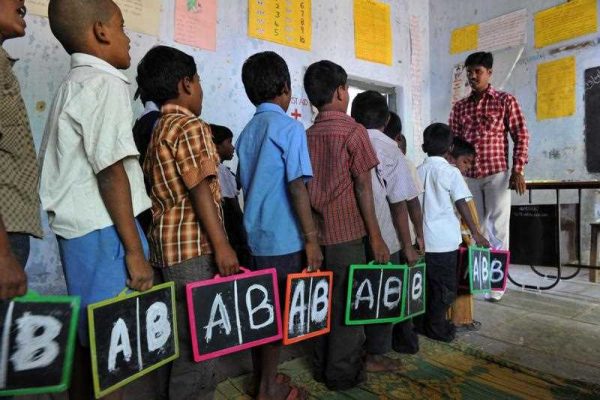In 2009 the government of India passed the Right of Children to Free and Compulsory Education Act (RTE), which mandates criteria for school facilities and teacher employment. In the capital of Bihar — the fastest growing state in India — a study by the India Institute concludes that this will eventually shutter three quarters of the schools that serve 68 per cent of Patna’s mostly poor children.
According to renowned author and public intellectual Gurcharan Das:
‘India must be unique in the world for wanting to close down schools that serve the poor. What would be admired elsewhere as an example of entrepreneurial initiative (or jugaad as they say in Hindi) has been made illegal by India’s educational establishment … In order to comply with the standards, these schools would have to raise fees three to four times, and then the poor would not be able to afford them’.
But if children can attend government schools at no cost, with meals, uniforms, spacious playgrounds, and well-paid teachers, why do so many low-income parents still send their children to unregistered private schools?
The India Institute opened a street-by-street survey to determine exactly how and why many students were attending government and private schools. Utilising global positioning technology to plot and map the location and distribution of schools, the survey covered all 72 wards of the city — a population of 1.7 million people. Hundreds of households were interviewed. While official statistics showed only 350 schools operating in Patna, the survey found 1574 schools. Government officials estimated that there were only 14 unaided private schools, yet the India Institute revealed 1224 — almost 90 times the official number.
In a one-kilometre radius from government schools they found a multitude of private, unregistered schools that mostly served low-income households. For example, 17 per cent of government schools were each surrounded by 20–30 private schools and another 17 per cent of government schools were each surrounded by 50–60 private schools.
The India Institute also found that 70 per cent of the parents sending their children to government schools would gladly send their children to private schools if they could afford to do so. At private schools, even though teachers are paid less and have less formal training, they were found to be more dedicated to student performance. Other advantages include a student-teacher ratio that is half that of government schools, a rate of teacher absenteeism four times lower, and exam scores that are much higher.
Students sometimes double enrol. First they enrol at registered government schools to obtain certification that enables them to sit for public board exams, at the end of grades nine and ten, and university admission. Then they enrol a second time at unregistered private schools where they obtain the quality education essential to score well on exams and to gain an edge in the jobs market.
As a result of the survey findings of the India Institute, the government came to realise that they could not close down 1000 unregistered schools and expect 345,000 students to be absorbed into the remaining 400 state-run and registered institutions. These measures have temporarily been put on hold in Patna, but pressure continues to mount elsewhere across the country.
The RTE Act is considered central to the Indian federal government’s education plan and, since it provides 65 per cent of the total education budget, it has been using the power of the purse to twist the arm of state governments to proceed with implementing the law. According to Baladevan Rangaraju, the founding director of the India Institute, ‘It remains to be seen how long the Bihar government can withstand this pressure. As usual, politics and convenience, rather than reason, will decide the future of the education of millions of children in the world’s largest democracy’.
‘I am not sure if the RTE can be stopped at this stage’, comments Barun Mitra, President of the Liberty Institute in Delhi. ‘Even if politicians show some reluctance to enforce the law, the judiciary is likely to step in to enforce RTE’. This is the motivation behind the Centre for Civil Society international petition on education in India and has inspired Rangaraju to increase the speed, range, and scope of his school surveys across country.
If their voices are not heard, a sizeable portion of India’s poor students could be shut out of the education system. This could damage not only their future prospects but also the prospects of India as a whole.
Ken Schoolland is Director of the Entrepreneurship Center and an Associate Professor of Economics at Hawaii Pacific University.

